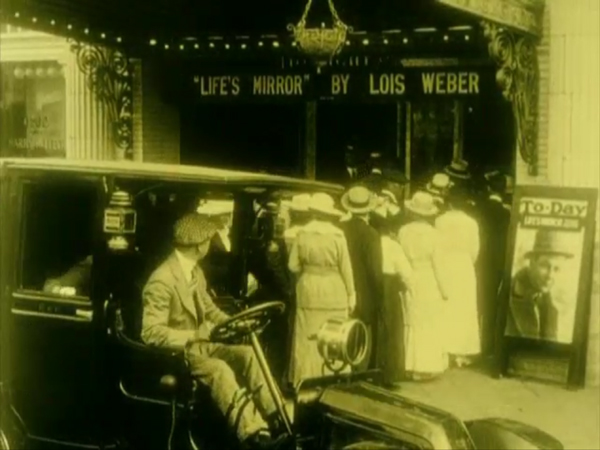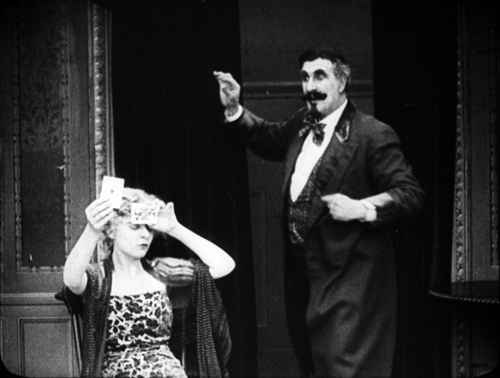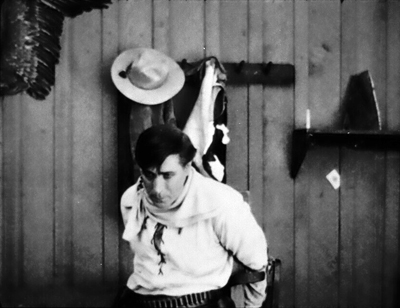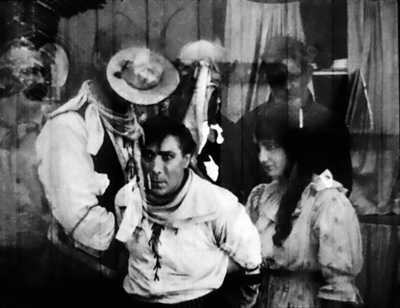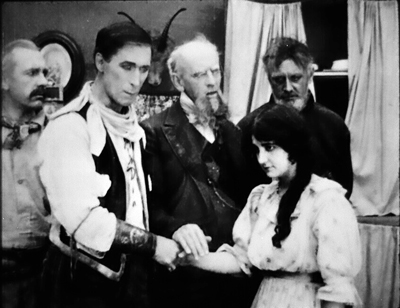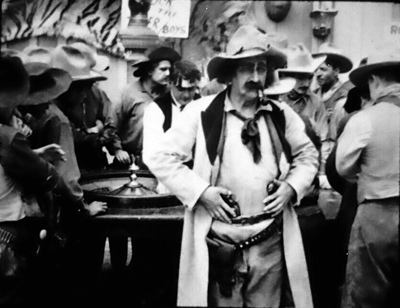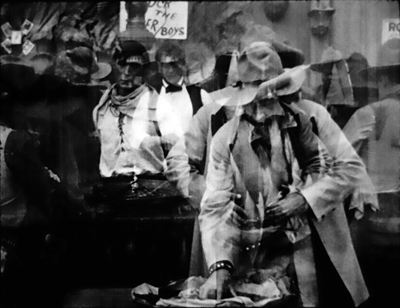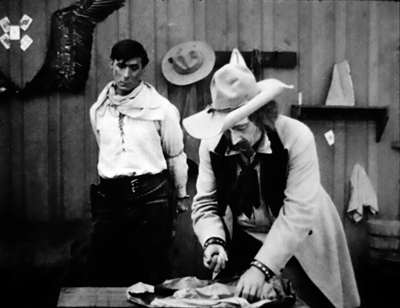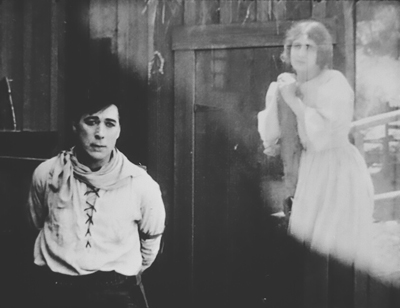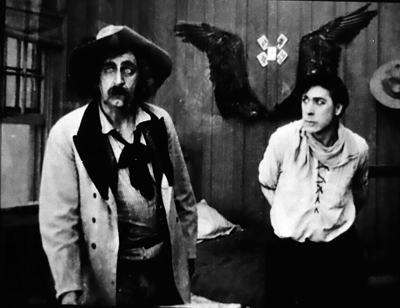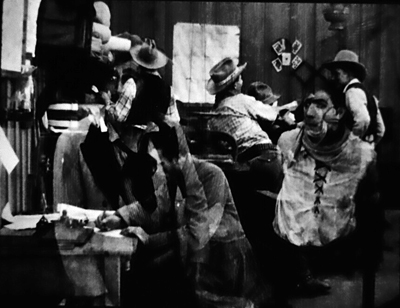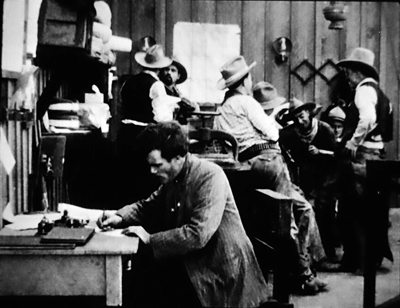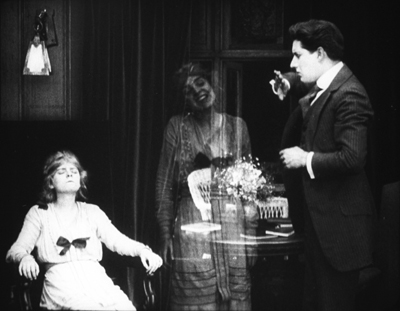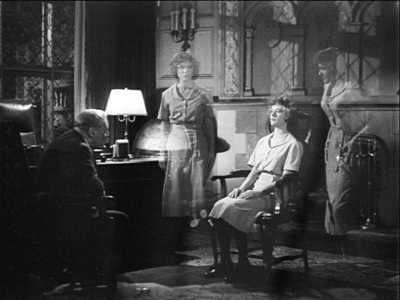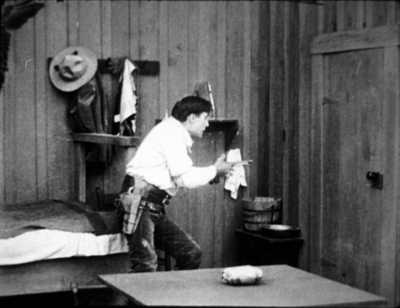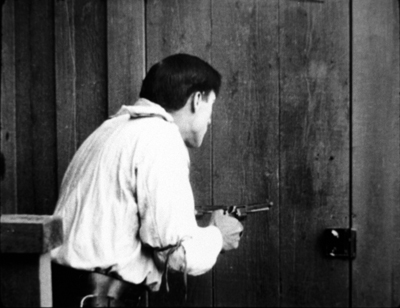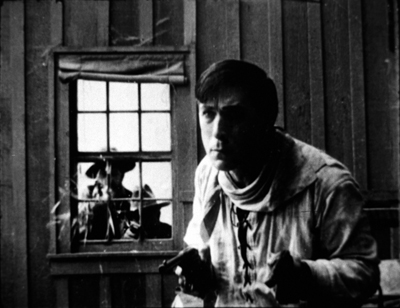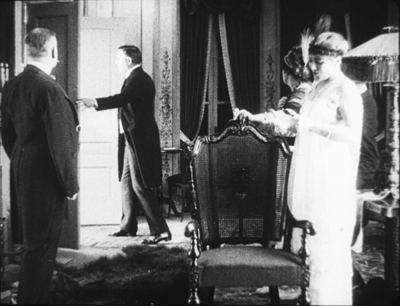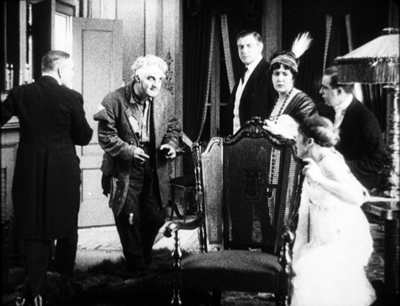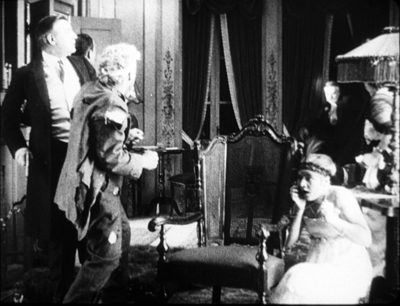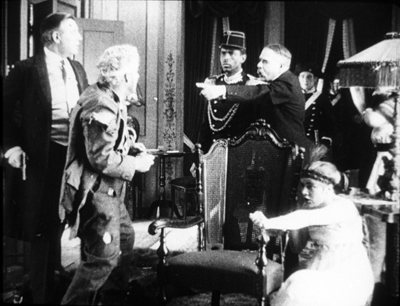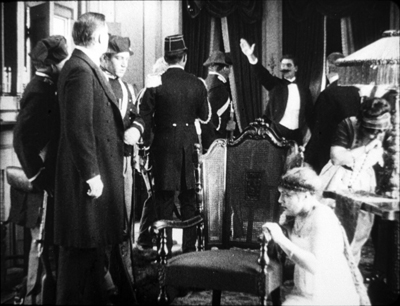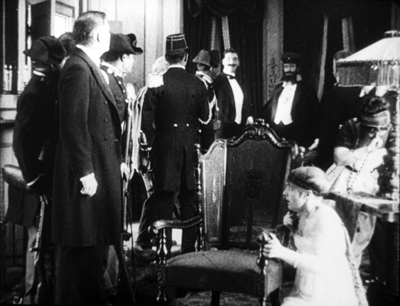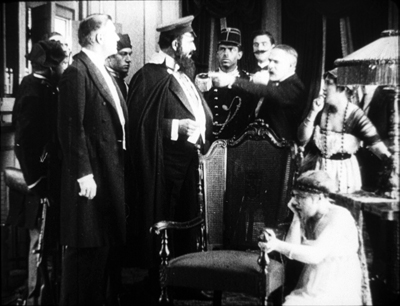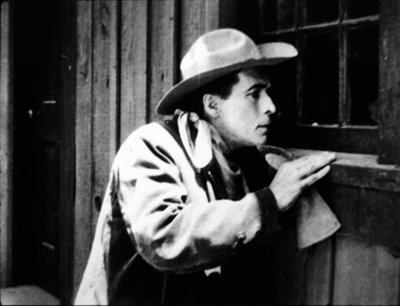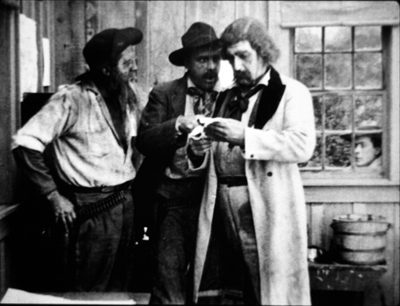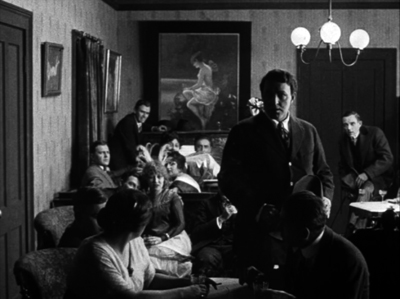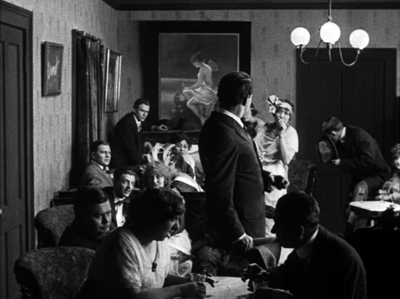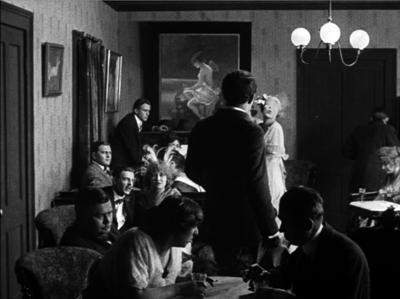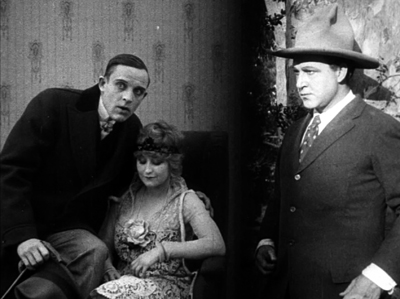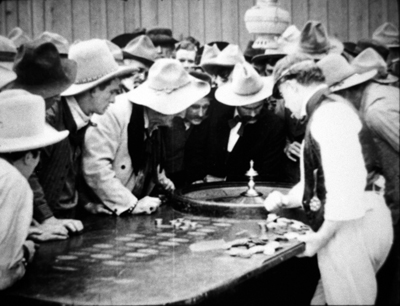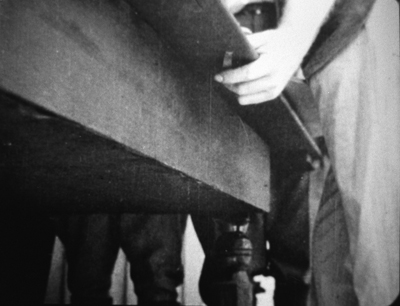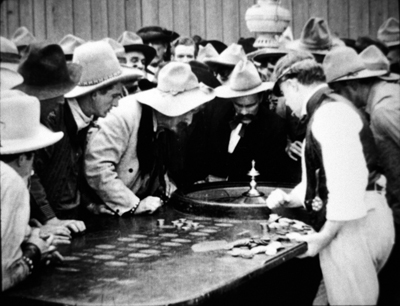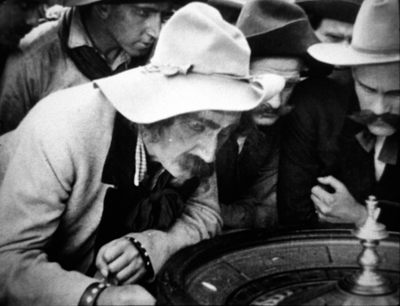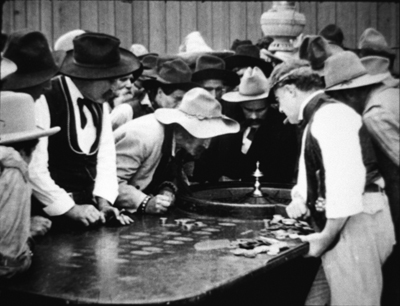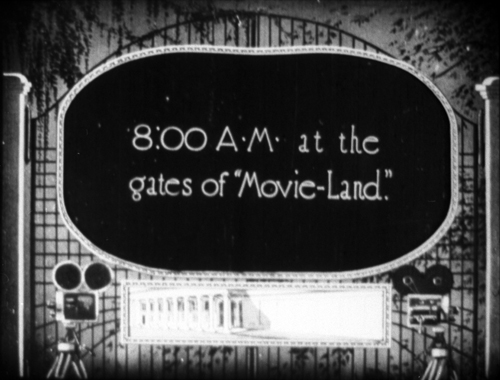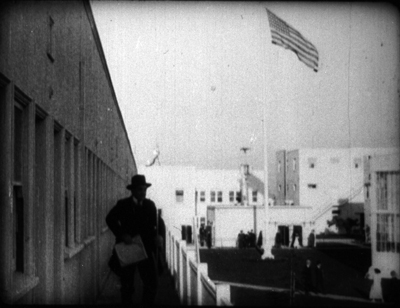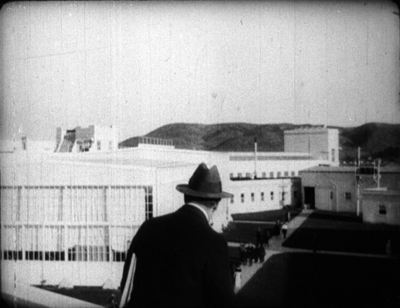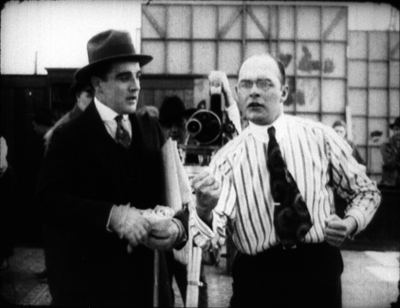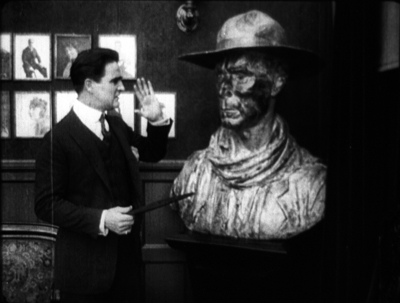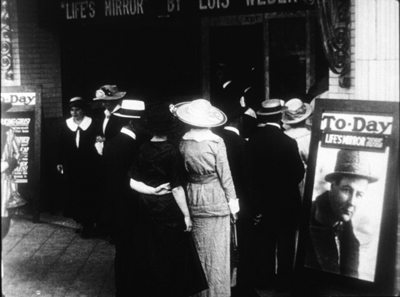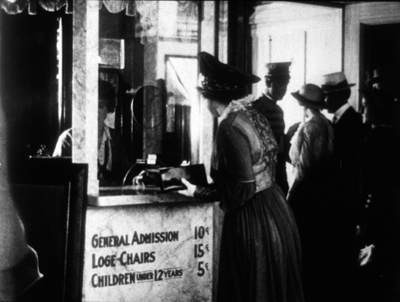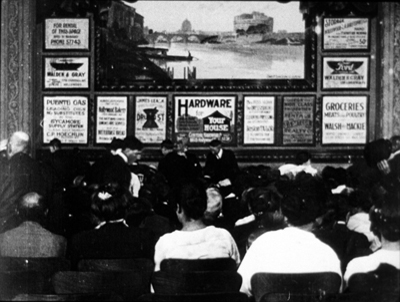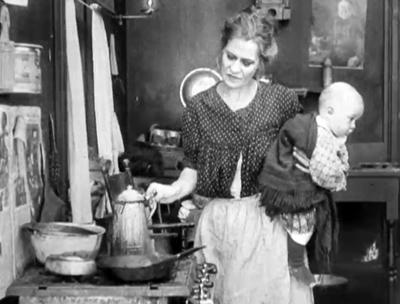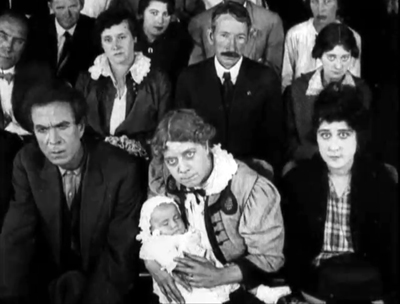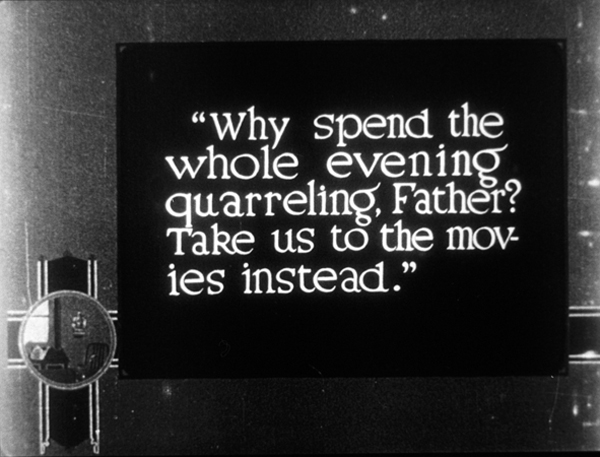Something familiar, something peculiar, something for everyone: The 1910s tonight
Saturday | November 18, 2017 open printable version
open printable version
Idle Wives (1916), produced by Lois Weber and Phillips Smalley.
DB here:
This year I’ve been bouncing between two magnificently creative decades in US film, the 1910s and the 1940s. In autumn I’ve been caught up in things involving Reinventing Hollywood, but those were followed by some big doings on campus.
In spring I was lucky enough to be in residence at the John W. Kluge Center at the Library of Congress. That enabled me to watch nearly a hundred feature films from 1914-1918. I did a talk at the Library reporting on some of that work, and I’ve offered some preliminary observations on those in earlier entries.
Last week, Jim Healy of our UW Cinematheque brought some of the films that had impressed me during my DC stay. There was a Saturday marathon of The Iced Bullet (1917), Alias Jimmy Valentine (1915), The Bargain (1914), Will Power (1913), and The Man from Home (1914). For our Film Studies Colloquium across two Thursdays we screened False Colours (1914; incomplete), The Case of Becky (1915), Idle Wives (1916; incomplete), and Ben Blair (1916). Some of these I’ve written about in earlier entries, here flagged by links.
The Saturday screenings were accompanied by the lively, indefatigable playing of David Drazin. David worked for many hours and without having seen the films in advance. He’s a superb artist.
Seeing the films again, of course I found more to say.
Revival and revision
The Case of Becky (1915).
One of the secondary arguments in Reinventing Hollywood is that many storytelling techniques of silent film subsided during the 1930s but were revived during the 1940s. Silent films were full of dream sequences, subjective points of view, fantasy projections, and flashbacks. Those got elaborated and consolidated for the sound cinema by Forties filmmakers.
So it wasn’t surprising to find that The Bargain, a fine William S. Hart western, squeezed a lot of mental imagery into a single scene. The Sheriff has arrested Jim Stokes and retrieved the money he stole. Lashed to the bedpost, Jim remembers his wedding and the woman he’s betrayed, presented in a slow dissolve to the past.
Meanwhile, downstairs in the saloon casino, the Sheriff succumbs to an impulse and loses all his money at roulette. Then he remembers, via another dissolved-in flashback, that he scooped up the stolen money too.
Back in the present, he digs that money out of his poke and bets it—and loses.
Later, in the hotel room, Stokes learns of the Sheriff’s folly and has a good laugh. But then he imagines Nell waiting for him, shown in a split-screen image.
At which point the Sheriff imagines his telegram arriving at his town, announcing Jim’s capture and the recovery of the money. That vision reminds him that he can’t return without the money he has squandered.
This makes him strike the central bargain with the thief he’s captured.
In a 1930s film, these visualized memories would most likely be presented verbally, as part of the stream of dialogue. (“When I think of marrying Nell….””I’ve promised to bring the money back…”). But 1910s American films tended to use dialogue titles sparingly; a lot of the films we saw asked the viewer to grasp the situation without benefit of words. The Bargain has only nineteen dialogue titles in 77 minutes (at 16 frames per second).
The Bargain is a good example of how purely pictorial storytelling was used to explicate a situation. Interestingly, today’s films are rather close to this tendency: fragmentary flashbacks and mental visions are common in mainstream movies.
Another echo struck me, this time in The Case of Becky. This is an early story of split personality, a narrative premise popularized after The Strange Case of Dr. Jekyll and Mr. Hyde (1886). Here the young woman Dorothy (Blanche Sweet), under the sway of the sinister hypnotist Balzamo, develops a second identity, the surly and disruptive Becky. Becky isn’t really very dangerous, but when a young doctor, himself a master of hypnosis, falls in love with Dorothy, he determines to cast out Becky. He does so in a passage of intense mind control, visualized through a double exposure of Becky departing Dorothy’s body.
What interested me is that the same visual device was used by Arch Oboler in Bewitched (1945), one of the earliest psychoanalytical films of that era. The heroine’s two sides are summoned up by the shrink.
I suspect that Oboler got wind of the Selznick/Hitchcock Spellbound (1945) and rushed a B-film into production. (He could move fast because he adapted one of his radio plays.) Bewitched was released five months before the Selznick/Hitchcock film. It’s not great movie, but it has a sort of pre-Psycho pitilessness, and it’s always nifty to see a 40s film picking up on a silent-film device.
Cutting things up and filling the corners
My main research questions about the 1910s revolved around stylistics—matters of staging, lighting, shot scale, variety of camera setup, and editing choices. For about twenty years I’ve been exploring how, to put it broadly, the long-take, intricately staged tableau cinema was largely replaced by films dependent on continuity editing. By focusing on the years 1914-1918, I thought I could track the transition in finer grain.
Many films were already building their scenes out of several shots. Go back to The Bargain, from 1914. A series of shots shows Stokes surrounded at the door and window, while also giving us a brief shot from a new angle incorporating tight depth, as the men at the window get the drop on him.
This freedom of camera placement within a single set is typical of the Hart films (see here and here), and of other films by Reginald Barker. It was sometimes visible in Alias Jimmy Valentine from the year before (1913), but it’s more pronounced in The Bargain. Several scenes in the hotel room where Stokes is tied up display a fairly wide array of camera setups.
At the other extreme, The Man from Home (1914), credited to Cecil B. De Mille and Oscar Apfel, displays the tableau approach in full bloom. One long take at the climax shows a packed salon. To take just the high points of some pretty dense choreography: Ivanoff bursts in to confront his errant wife, who crumples in the lower right.
Pike holds off the Earl of Hawcastle, now partnered with Ivanoff’s wife. Hawcastle rushes to the right rear to open the curtains (stepping into a spotlight). Summoning the police, he returns to the middle ground to demand the arrest of the fugitive Ivanoff.
But a functionary arrives in the background, lifting his arm to signal the arrival of the bearded Grand Duke Vasili. Vasilii stalks in to take command of the middle ground and confront Hawcastle. Throughout. shrewd shifts of actors’ position open pockets of action, and the performers turn from the camera to drive our eye into depth.
Throughout most of this tableau, broken by occasional titles, Ivanoff’s treacherous wife is crouching in the lower right. This is an example of the “all-over staging” we find in 1910s cinema. Often corners and edges of the frame will be activated and demand to be noticed. For example, in The Bargain Stokes is observing a scene through a window. Cut inside the room, and Stokes can be seen way off to the right in a single pane.
Later directors would have placed the window nearer frame center so that Stokes’ face would be more quickly noticed.
Sometimes we find the filmmaker trusting the audience—or at least a modern audience—too much. In Ben Blair (1916), Ben is lured into a brothel and pulls his pistol in order to escape. But in the master shot, off to the right, the astute viewer can see the louche Sidwell, who’s aiming to marry Flo, cozying up to a hooker before he rises to flee the room. He has already met Ben and fears being recognized.
Director William Desmond Taylor doesn’t supply what I expect Barker would provide: a separate shot of Sidwell seeing Ben and rushing out of the room. Nor does Taylor provide a gradually unfolding tableau that would, by means of figure movement, frontality, centering, and other cues build to a crescendo revealing Sidwell’s presence—the sort of thing we see in The Man from Home. As it is, many viewers may miss the main point of the scene, which is to divulge Sidwell’s sexual betrayal of Flo.
But maybe this was best. Cutting straight in to Sidwell might have suggested that Ben recognizes him immediately. But he doesn’t. As Ben turns, Sidwell is ducking away. Ben has revealed, and seems to be concentrating, on a new center of interest, the woman who’s impudently blowing out cigarette smoke at him. He, like us, is distracted from Sidwell’s departure.
Still, we’re supposed to spot Sidwell even if Ben doesn’t. Only much later, after Sidwell has nearly convinced Ben to give up on courting Flo, does Ben realize that it was Sidwell he saw in the brothel. That’s done through a split-screen flashback of Sidwell starting guiltily beside his floozy.
Again, the shot is a little clumsy in showing Sidwell looking toward the camera, as if Ben saw him directly; but it seems to be another mental image, representing Ben’s now-clear impression that Sidwell was in the brothel.
We don’t have to puzzle over such matters in The Bargain. Barker had mastered the precision necessary for off-center details. When the Sheriff is risking his money at the roulette wheel, a close-up reveals that the croupier is controlling it.
But here’s the neat part. At the turning point, when the Sheriff loses everything, Barker gives us close-ups of the Sheriff and the croupier, but not the hand pressing the button.
We’re sufficiently trained to spot the croupier pressing the button in the long shot (again, off-center). There’s no need to show the gesture again because the priming close-up has told us the game is fixed. Interestingly, that insert shot doesn’t come at the very start of the Sheriff’s gambling jag, so initially we might think the wheel is honest. We get the revelation just when the Sheriff is about to bet the money he can’t afford to lose. That boosts the dramatic tension.
Movies within movies
The Iced Bullet (1917).
While stylistics was my prime research focus, I couldn’t help but notice some bold narrative initiatives. A good example of a playful one was The Iced Bullet (1917), which has a Russian-doll structure (like many 40s films).
The inner tale recounts how a scientific detective solves an attempted murder, one using the method tipped in the title. But that’s swallowed up in a prologue and epilogue showing a foppish author crashing the Ince studio. He manages to interfere with filming, evade the guards, and take refuge in an executive’s office. He has brought along his screenplay, The Iced Bullet, which he hopes to direct and star in.
At the desk he falls asleep and dreams the detective story we see. At the film’s end he wakes up and flees the studio, pursued by watchmen. One trade paper of the time suggests that the comic frame story was devised in order to expand and elevate the murder story–which may explain why the film has been credited to both Reginald Barker and Charles Swickard. Maybe one directed the frame story and one the embedded one.
As the frame story stands, it offers us not only a comic pretext but precious views of the vast Ince studio.
There are also some nerdish in-jokes. C. Gardner Sullivan, author of the whole film we see, appears as the executive whose office is commandeered, while Barker shows up as a raging director trying to get the aspiring screenwriter off the set.
And when that invader takes over Sullivan’s office, he scoffs at a huge bust of William S. Hart, by now a major star.
The year before, Lois Weber and her husband Phillips Smalley had given us a more intricate film-within-a-film structure. The central story of Idle Wives centers on the plights of three women. Anne Wall is a wealthy but disillusioned wife who leaves her husband John to take up settlement work. She lives with Alberta, who has married John’s brother Richard. The couple has been disowned by John’s mother and sister. In her charity duties Anne meets Molly Shane, who has left her family to run off with the no-good Larry. Anne helps Molly through her pregnancy and reconciles her with her family. John, seeing how Anne has changed the lives of unfortunate women, welcomes her back and faces down the disapproval of his mother and sister.
This story is enclosed within another one, involving three other women. The Jamiesons, though wealthy, have an empty marriage. When Jamison meets an old girlfriend, they decide to go see a movie. They’re trailed by Mrs. Jamieson. At the same time, Mary Wells disobeys her mother and goes out with the thug Tough Burns. They wind up going to the same movie theatre. And the poor, hard-working Smith family, whose daughter is longing to escape, decides to take a day off and go to the theatre as well. All of them join the audience for Life’s Mirror, a film by none other than….Lois Weber. It stars Weber and Philips Smalley, who’s given his own poster.
This frame story, not in the source novel, is pretty stunning. In the first reel the people assemble at the theatre, which, as you see up top, flaunts the Weber-Smalley brand. These scenes are fascinating representations of moviegoing culture of the time, showing the ticket booth and the auditorium.
Just as important is the way that seeing the movie affects the characters in the frame story. Shots show people in the audience reacting to the fictional world.
The point of the film is that the characters, recognizing their counterparts on the screen, improve their behavior. Cinema is granted the power to divine the problems of its audience, and to heal their lives.
Or so we’re told from contemporaneous synopses. Because, in one of the great losses of American silent cinema, we have only the first and second reels of Idle Wives. Fortunately, those constitute the prologue and the initial exposition of the inner story.
How does the frame story turn out? According to the fullest contemporary account I’ve seen, in the epilogue Jamieson sees his wife weeping in the aisle, sends her rival away, and reconciles with her. Mary is shocked into realizing the risk of dating Tough Burns, who seems ready to reform after seeing his fictional double behave so cruelly. The Smiths agree to be kinder to one another, and the daughter of the family realizes the danger of fleeing home.
Two network narratives, then, in a single movie. Idle Wives has over twenty individuated characters, linked by kinship or domestic circumstances. (For instance, in both stories some characters live in the same building.) It becomes didactic, as Weber’s films often are, with the theatre presenting a placard that underscores the lessons, and opening titles that address the audience directly. Idle Wives was fairly described by a review as “a preachment on the sacredness of the home, also on the power of the motion picture.”
For most film historians, the great experimental film of 1916 was Intolerance, another tale of parallel situations and fates. But the same month that Griffith’s ungainly masterpiece was released saw the appearance of Idle Wives—in its way, no less daring, and by today’s standards startlingly modern. How many other remarkable films have been lost or have gone unnoticed? Like archaeologists excavating a site, we have a lot more digging to do to understand the glories and unpredictable experimentation of the cinema of the 1910s.
Thanks to my hosts at the Kluge Center last spring: Ted Widmer, Emily Coccia, Travis Hensley, Callie Mosley, Mary Lou Reker, and Dan Turello, as well as the team in the Moving Image Research Center–Karen Fishman, Dorinda Hartmann, Josie Walters-Johnston, Zoran Sinobad, Rosemary Hanes, and Alan Gevinson–along with the Culpeper dynamic duo Mike Mashon and Greg Lukow. We in Madison are especially grateful to Lynanne Schweighofer and George Willemen for preparing a reconstructed version of Ben Blair. Thanks also to Jim Healy, Mike King, and Roch Gersbach for arranging the Madison screenings.
Some of David Drazin’s piano accompaniments are available on DVDs from Texas Guinan (that’s right, tguinan at aol.com).
Idle Wives has been posted online by the New Zealand Film Archive and the Library of Congress. An informative puff piece from the era is “The Smalleys Turn Out Masterpieces With Actors or With Types,” The Moving Picture Weekly 3, 14 (18 November 1916), 18-19, 26. The most comprehensive guide to Lois Weber’s career is Shelley Stamp’s Lois Weber in Early Hollywood (University of California Press, 2015). I discuss the Smalleys’ little masterpiece Suspense (1913) here. Reinventing Hollywood has a chapter on the psychoanalytic cycle of the 40s, including Bewitched.
On all-over staging, and bungling the tableau, see the entry “Looking different today?” We have some entries on decentered framing, one on Mad Max: Fury Road and another on Fritz Lang’s use of corner frame space.
Idle Wives (1916).












